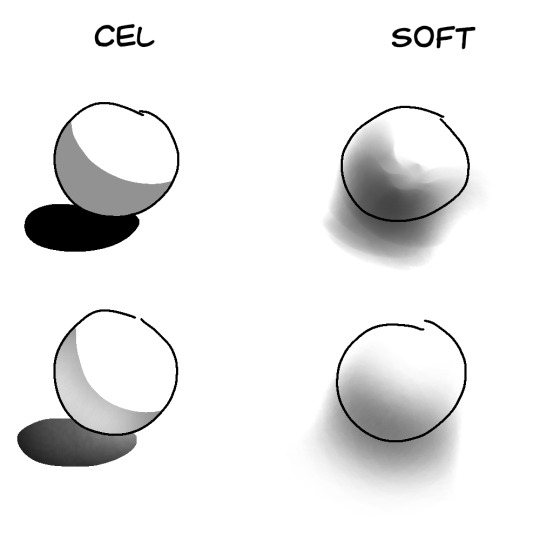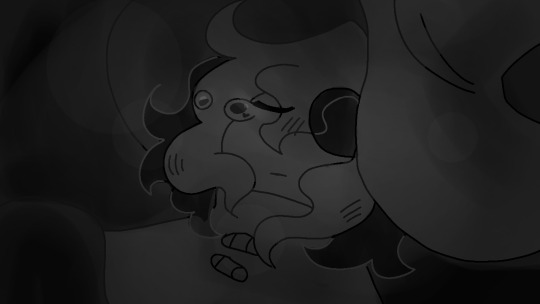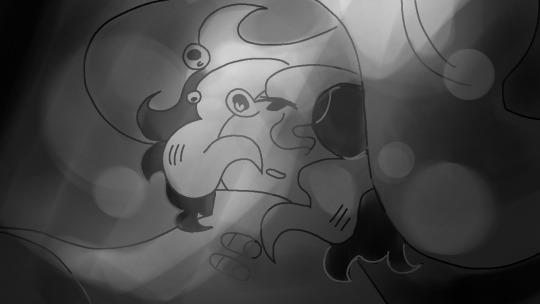#the style is the blocky lineart like before but i wanted to do soft shading for the cover!
Text

Pokemon Mystery Dungeon Exploration Team Ultra - AKA "PMD ETU" Returns with a Reboot, starting October 1st, 2023!
Pages will be posted in groups as I finish them!
Want to start from the beginning? Pages are posted individually on Deviantart/Chronologically. [Click Here]
Old pages are being left up as an Archive- some things have changed from the original though!
#PMD#Pokemon mystery dungeon#pmd comic#PMD ETU#Pokemon#Pokemon comic#pmd eos#pmd2#etu#pmd explorers#Amoris#Hester#Sorry its a reboot but I REALLY have been wanting to change Hester's tail forever plus things like general art improvement etc lol#the style is the blocky lineart like before but i wanted to do soft shading for the cover!#Its styled like the sky cover rather then being random like before which i like a lot better too lol#I need to make a new icon for this blog too
54 notes
·
View notes
Text
fun little art tip with llilyrose
there's lot of niche terms used to define different aspects of art; e.g. "rendering" is different from "shading" where shading provides depths and rendering includes shading but also includes parts of the process like hue-shifting and gradient charts, or half-tones vs. crosshatching (which is a different thing entirely).
The example I wanted to talk about here is cel shading vs. soft shading!! it's become more relevant in my art as i start pumping out fully rendered pieces and I thought it was notable enough to post.
"`What's the difference?"
here's a chart so you can get at what I'm saying:

Cel shading is the type of shading you'll see in animation! That's because it's easier to redraw every frame, of course. It's also just a lot more common. While soft shading leans towards a more abstract form of shadows and form, cel is very direct and easier to understand unless the person using soft shading knows what they're doing. it can use fades within its blocky parameters (usually to indicate light bouncing back onto the shadow), but its edges are tend to be pretty crisp.
Soft shading, as the name suggests, focuses on impressionistic shading. this means it will imply something is there instead of making it 100% clear, like you can see in the shadows cast by the sphered shaded in soft. in ibis paint this is seen in the airbrush pen or the pen brush (fade), which i personally rely on while shading.
"which ones better?"
it depends on the situation, of course!
"in which situations should i use each shading?"
I'm glad you asked!
obviously, if your artstyle leans more towards one type of shading than the other, this advice won't mean a whole lot to you, but if your artstyle blends the two it's very important to remember:
cel shading should be used when a light source is close to its object, and can change depending on the brightness of the light. rim lights (the thin lighting you see close to/within lineart) usually come from lights behind the object. think about how bright your light is and what exactly it touches in the art piece.
take this for example:

this piece uses a mix of soft and cel shading, but i want you to focus on the cel shading for me here. the lighting is harsh and only touches everything that the star's light would! since it's the only light source, everything else should be practically pitch black, but sometimes you have to sacrifice realistic aspects of your artwork in for it to be intelligible.
this post is MOSTLY about soft shading, though, because I'm most familiar with it and people need help with that the most, evidently.
soft shading should be used to highlight the brightness of an object (think of the "halos of light" that surround real world light sources). in the above piece, everything gets darker the further away it is from the star, and i utilize circles of soft shading for this effect. i also soft shade into a darker color the parts of siffrin that aren't reached by the star to give him some depth. there's some soft shading for clothing wrinkles too but that's just my own style.
soft shading can also be used for distant light sources!


the first image is a subtler example of this effect and the second image is a lot more direct.
you can tell that the light source isn't In His Face because the lines between values aren't super clear. even though the second image's light is bright, you know it's not as harsh as the last example was because the shading isn't as clear cut.
usually when bright light hits an object I'll set a layer to the "add" blending mode and gently airbrush it before setting it to a lower opacity. it's meant to mimic the light that bounces off an object when lightwaves hit it, but this only works in SOME pieces.
(addendum: using soft shading ONLY for your pieces can be difficult if you don't understand how light would normaly hit your object. soft shading works best on rounded surfaces and cel shading works best on sharper ones, like pyramids and cubes and whatnot)
overall both styles of shading are perfect for some things and not so perfect for others. they work the best when you use them together, but they look similarly stunning when used in their own as well!! this post is just meant to give a few tips on a piece of my art process and maybe give you a look into the core of my art style,,,, if anyone has any questions about the things I make my askbox is always open!
#art tips#shading#as im writing this there are dogs BARKING AND HOWLING OUTSIDE. HELP. THEY'VE LITERALLY NEVER DONE THIS BEFORE#WGAT DO I DO???? do we have wolves?? I didn't think there were any whereg i lived. what.
9 notes
·
View notes